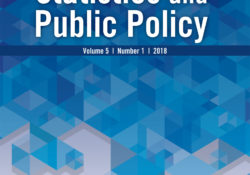tandfonline.com har udgivet en rapport under søgningen “Teacher Education Mathematics”: Abstract Abstract This study examined student readiness to learn and teacher effectiveness in order to determine their impact on middle grades mathematics achievement. Survey data were collected from 964 middle grades students and 93 mathematics teachers in Texas. This study is the first to use this particular collective efficacy short form with middle grade students, and factor analyses were conducted accordingly. Hierarchical linear modeling was used to measure the relationship between teacher perceptions of student readiness to learn and student perceptions of teacher effectiveness on mathematics achievement in the middle grades. The results of these analyses indicated that students’ perceptions of teacher effectiveness and teachers’ perceptions of student readiness to learn each made a significant contribution to the variance in… Continue Reading →
Like this:
Like Loading...
tandfonline.com har udgivet en rapport under søgningen “Teacher Education Mathematics”: Abstract Abstract In this overview piece, we document the six student perception surveys (SPSs) currently available for state, district, and school consumption and use, given SPSs are increasingly becoming one of the more popular “multiple measures” being used to evaluate teacher qualities. We present descriptive information about each of these SPSs, including information related to cost(s), constructs or domains assessed, number of items, response option types, grade level(s) in which the SPS can be administered, etc. Given this information, we also present implications for practice, as well as calls for future research into each SPS individually and writ large, given SPSs’ increasing popularity post the passage of the Every Student Succeeds Act (ESSA), and also given what consumers might need… Continue Reading →
Like this:
Like Loading...
tandfonline.com har udgivet en rapport under søgningen “Teacher Education Mathematics”: ABSTRACT Formulae display:?Mathematical formulae have been encoded as MathML and are displayed in this HTML version using MathJax in order to improve their display. Uncheck the box to turn MathJax off. This feature requires Javascript. Click on a formula to zoom. ABSTRACT Value-added models (VAMs) of student test scores are used within education because they are supposed to measure school and teacher effectiveness well. Much research has compared VAM estimates for different models, with different measures (e.g., observation ratings), and in experimental designs. VAMs are considered here from the perspective of graphical models and situations are identified that are problematic for VAMs. If the previous test scores are influenced by variables that also influence the true effectiveness of the school/teacher… Continue Reading →
Like this:
Like Loading...
tandfonline.com har udgivet en rapport under søgningen “Teacher Education Mathematics”: ABSTRACT Formulae display:?Mathematical formulae have been encoded as MathML and are displayed in this HTML version using MathJax in order to improve their display. Uncheck the box to turn MathJax off. This feature requires Javascript. Click on a formula to zoom. ABSTRACT This study shows value-added models (VAM) and student growth percentile (SGP) models fundamentally disagree regarding estimated teacher effectiveness when the classroom distribution of test scores conditional on prior achievement is skewed (i.e., when a teacher serves a disproportionate number of high- or low-growth students). While conceptually similar, the two models differ in estimation method which can lead to sizable differences in estimated teacher effects. Moreover, the magnitude of conditional skewness needed to drive VAM and SGP models apart… Continue Reading →
Like this:
Like Loading...
tandfonline.com har udgivet en rapport under søgningen “Teacher Education Mathematics”: Abstract Formulae display:?Mathematical formulae have been encoded as MathML and are displayed in this HTML version using MathJax in order to improve their display. Uncheck the box to turn MathJax off. This feature requires Javascript. Click on a formula to zoom. We compare teacher evaluation scores from a typical value-added model to results from the Colorado Growth Model (CGM), which 16 states currently use or plan to use as a component of their teacher performance evaluations. The CGM assigns a growth percentile to each student by comparing each student’s achievement to that of other students with similar past test scores. The median (or average) growth percentile of a teacher’s students provides the measure of teacher effectiveness. The CGM does not… Continue Reading →
Like this:
Like Loading...
tandfonline.com har udgivet en rapport under søgningen “Teacher Education Mathematics”: ABSTRACT Formulae display:?Mathematical formulae have been encoded as MathML and are displayed in this HTML version using MathJax in order to improve their display. Uncheck the box to turn MathJax off. This feature requires Javascript. Click on a formula to zoom. ABSTRACT Value-added models (VAMs) are being used in education to link the contribution of individual teachers and schools to students’ learning. The use of VAMs has been surrounded by controversy and high-profile public debates. On April 8, 2014 the American Statistical Association (ASA) released a statement on VAMs related to their use in education practice. In this article, we lay out the discussion of the main points raised in the ASA statement within the large amount of scholarly literature… Continue Reading →
Like this:
Like Loading...





